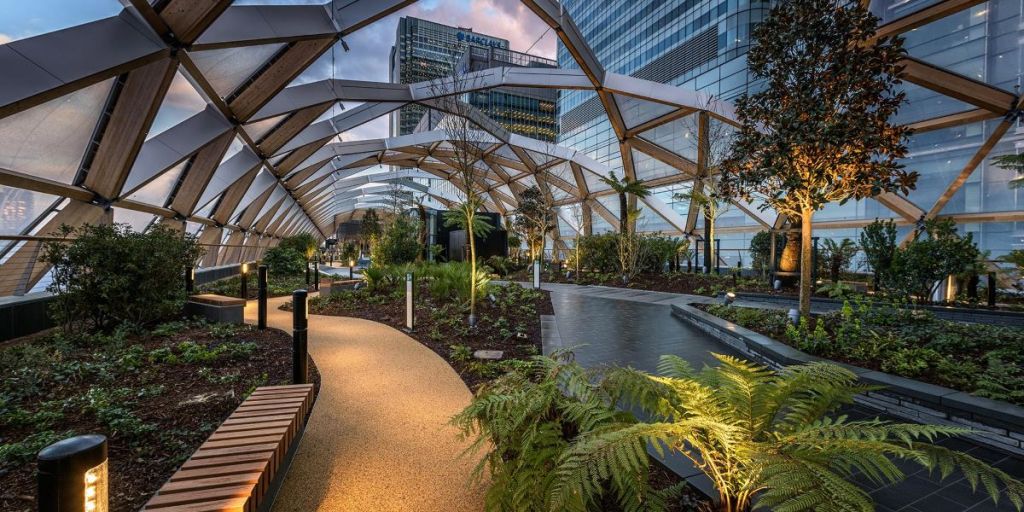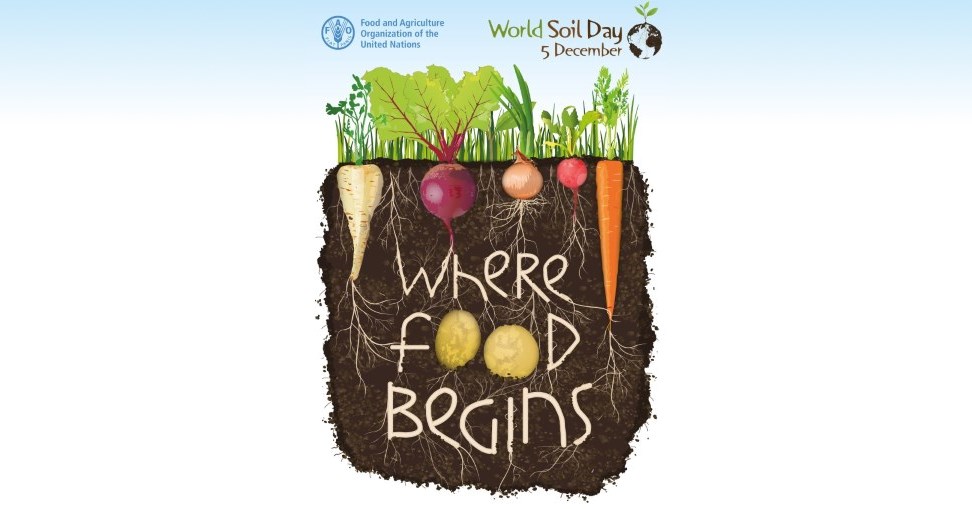Constructing a new sports pitch for a school during term time presents its own special problems - like access to the site. Obviously, eight-wheeler lorries and schoolchildren should never mix. That's when a grab lorry comes in handy - here we are delivering topsoil for a project in North Kent. Interestingly, part of the soil is being re-purposed from another project where the re-modelling of the site left us with vast amounts of great soil. Reduce, reuse, recycle!

(This article first appeared in the ProLandscaper Podium Landscapes supplement, published 21 February 2018.)
Bourne Amenity was first enlisted to blend a soil for podium planting back in 2007. We were challenged to come up with a lightweight solution to help reduce the load burdening, while maintaining the topsoil’s structural and nutritional integrity. The usual field bulk density of our topsoils at field capacity is around 1,300kg per m³ and this had to be reduced to a working density somewhere below 1,000kg per m³. However, we didn’t see our first official specification for a podium planting medium, until 2012.
Podiums differ from roof gardens, as they don’t often have the depth of materials available due to the way they are engineered. They are usually car park roofs and haven’t been designed to take volumes of materials, or don’t have set drainage systems installed ready for the landscapers to finish the work. The trend has changed over recent years and we now see a greater need for greening large house builds, specifically in cities; it’s now taken into account at the design stage, allowing for better living environments and better designed drainage systems to ensure longevity.
Podium soils, where load bearing and drainage are primary concerns, are becoming popular among those designing urban schemes that need to comply with SuDS requirements, as well as satisfy demands for more green spaces in densely populated areas. We have seen projects, such as Thomas Heatherwick’s 1,000 Trees scheme in Shanghai, which look to make the most of urban space with an abundance of living roofs and walls. Space is at a premium, so designers are looking for innovative ways to reproduce full planting schemes, with limited space and weight demands.
To make a naturally heavy, sandy soil more lightweight, we experimented with various materials that have the desired effect without compromising the availability of nutrients or the integrity of the soil’s drainage capability. When blending soils, you must find a natural balance that suits the planting scheme and does not result in a material that has zero water retention and ends up drying out. There are various options available, from expanded clay pellets to crushed brick, and at Bourne Amenity we utilise both across our range of lightweight materials, for planting on podiums as well as roof tops.
By using single size sands and materials, such as Lightweight Expanded Clay Aggregate, you can reduce the topsoil compaction that usually accompanies the installation of these materials on congested inner city projects. The sand and the Lightweight Expanded Clay Aggregate opens the soil profile and allows for water and air to pass more freely throughout the soil layer, creating a healthier environment for plants and shrubs.
The blending ratio is key to maintaining the correct drainage-to-nutrient balance, and it’s crucial that soils perform across drainage and nutritional indicators, as well as bulk density. Ideally, the dry weight of your podium soil needs to be as low as possible, without compromising the structure or growing performance of the topsoil. Aim for around 800-850kg per m3 when the soil is bone dry. This will increase upon saturation, but manufacturers should aim for their material to not rise above 1,200kg per m3 when fully saturated. If the scheme is effective, then the material should never reach full saturation, but it is important to include the saturation figure in your analysis.
(You can find suitable podium soils on the Bourne Amenity website.)
First in an occasional series of definitions
A great deal of this business is about soil, and the wondrous many varieties thereof. To understand the differences, we shall have to dig a bit deeper (sorry) and take a look at some defining characteristics.
In general terms, the solid content of soil is a mixture of mineral particles and organic matter. (There will be air and water in there too, as anybody buying the stuff by weight will tell you.) For this post, let's look at the mineral contents.
The hard, inorganic stuff in soil consists of various kinds of rock, ground down by the action of weather and plant roots over the millennia. Obviously, the type of rock will have an impact on the speed with which the breakdown process progresses, as well as on the ultimate size of the resulting particles and their chemical composition. This is why soil and sand varies from location to location - if the exact specification of your soil is important, then you must look for an analysis of material from your specific source.
Mineral particles are defined by their size and are known as sand if bigger than 0.05mm (and if they are bigger than 2mm, then they are gravel and don't belong in soil at all). Particles smaller than sand but bigger than 0.002mm are called silt, whereas even smaller particles are clay. You can easily feel the difference by touch - clay compacts if you squeeze it, silt feels silky and smooth, while sand feels gritty. The mix of sand,silt and clay will determine how well the soil drains - or retains moisture, depending on how you look at it. The bigger the particles, the more free-draining.
In the next post in this series, we'll take a look at the organic content of soil.




